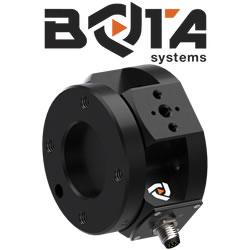What Is MTF Testing And Why It's Important?
Image Science is a manufacturer and designer of varying optical test equipment. All of this is for assessing the quality level of both infrared and visible lenses.
The modulation transfer function, also referred to as MTF, is a unique and interesting process. Moreover, MTF Testing and MTF Measurement are crucial in the resolution performance representation of an imaging lens. Basically, MTF tells us how good an optical system is performing. Without this, we cannot guarantee its high resolution.
Why is there a need for MTF measurement and testing?
It is important to note that MTF is a quantitative and direct measure of image quality. Optical systems, such as photographic optics, contact lenses, video systems, copy optics, photolithographic optics, and compact disk lenses, are measured via MTF.
The end result of MTF testing is a description of an image structure with notes on its spatial frequencies. Furthermore, you can even isolate the several frequency components for a specific evaluation.
Who benefits from modulation transfer function testing?
Did you know that MTF can also be related to end-use applications? These said applications are very much reliant on the resolution ability, as well as the image integrity, at a critical dimension. The most in-demand lithographic and photographic lenses relate to the size of the image and the structure to the end application requirement.
To give you an idea of how critical this is, imagine a video imaging system designed to consider the image size produced by the lens. There is a limit to the array pixel width but with the right lens which maintains a high MTF, it can actually go beyond this cut-off frequency.
Some of the other advantages of MTF testing include it being ideal for modeling concatenated systems. Since MTF is analogous to the response rate of electrical frequency, it can allow the modeling of optical systems through the linear system theory. This is then employed through numerous phases resulting in the expected system performance. This type of testing is universal and objective, and it also offers the most straightforward process of measuring optical systems' integrated polychromatic performance.
Here are the MTF testing benches available from Image Science:
Ultra-Violet B (UVB)
Near Ultra-Violet (NUV)
Visible (VIS)
Near Infra-Red (NIR)
Short-Wave Infra-Red (SWIR)
Medium-Wave Infra-Red (MWIR)
Long-Wave Infra-Red (LWIR)
How can Image Science help you with MTF measurement?
Image Science is a manufacturer and designer of varying optical test equipment. All of this is for assessing the quality level of both infrared and visible lenses. Some parameters included in their list of services are MTF, PTF or phase transfer function, EFL or effective focal length, FFL or flange focal length, FOC or field of view, and so much more.
If you want to learn more about the services and products offered by Image Science, as well as their applications and a complete list of distributors, you can visit Image Science's website at www.image-science.com or call us at (+44) 01865-400867. You can even send us an email at sales@image-science.co.uk if you have any questions about the testing benches for research and development applications.
Featured Product

Bota Systems - The SensONE 6-axis force torque sensor for robots
Our Bota Systems force torque sensors, like the SensONE, are designed for collaborative and industrial robots. It enables human machine interaction, provides force, vision and inertia data and offers "plug and work" foll all platforms. The compact design is dustproof and water-resistant. The ISO 9409-1-50-4-M6 mounting flange makes integrating the SensONE sensor with robots extremely easy.
No adapter is needed, only fasteners! The SensONE sensor is a one of its kind product and the best solution for force feedback applications and collaborative robots at its price. The SensONE is available in two communication options and includes software integration with TwinCAT, ROS, LabVIEW and MATLAB®.
